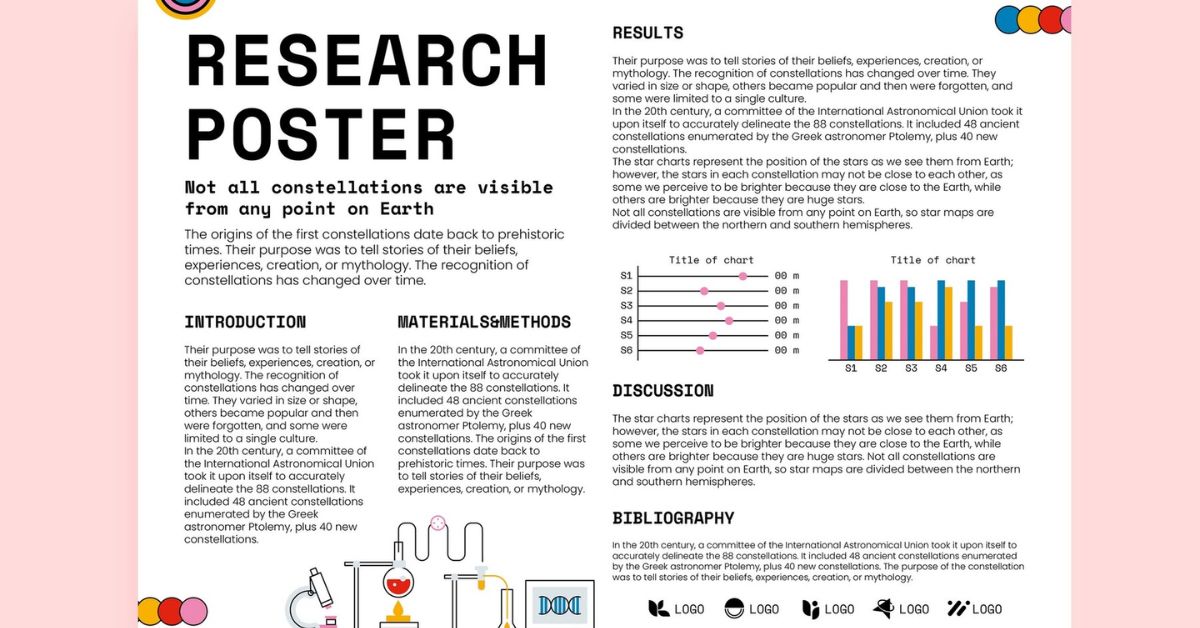Research assignments in the SPH3U (Physics) course provide an excellent opportunity for students to demonstrate their understanding of physical concepts through in-depth exploration. The Ssph3u 1-5g research assignment example challenges students to conduct independent research, analyze data, and communicate their findings clearly. It may seem overwhelming at first, but with the right approach, you can tackle it with confidence and ease. In this article, we will guide you through every step of completing the SPH3U 1-5G Research Assignment, from understanding the basics to finalizing your paper.
Understanding the SPH3U Course
What is SPH3U?
SPH3U is a high school physics course that focuses on understanding various principles of physics, including motion, energy, and forces. It’s an introductory course designed to equip students with a solid foundation in the natural sciences. Through this course, you’ll explore how different aspects of the physical world interact and affect each other.
YOU MIGHT ALSO LIKE: Step-by-Step Guide to Update GS724TPv2 to 1.1.50.39.ROM
Course Objectives and Key Concepts
In SPH3U, you’ll explore key concepts like Newton’s Laws of Motion, the work-energy theorem, and wave theory. This course is designed not only to teach you theoretical concepts but also to apply them in real-world scenarios. Completing the 1-5G research assignment allows students to synthesize and apply this knowledge to solve complex problems.
What is a sph3u 1-5g research assignment example?
Definition and Purpose
A research assignment is an academic exercise that requires students to explore a specific topic in depth. It involves gathering information from credible sources, analyzing the data, and presenting the findings in an organized and clear manner. The purpose of this assignment is to test your ability to conduct independent research and to assess your understanding of the topic at hand.
Why Research Assignments are Crucial in SPH3U
In SPH3U, the research assignment challenges you to explore a particular physical phenomenon or concept and apply your knowledge in a practical, real-world context. It’s designed to enhance your problem-solving skills, critical thinking, and ability to communicate scientific information effectively. Research assignments in this course are also an essential part of your overall grade and are invaluable for reinforcing the knowledge you acquire.
Key Components of the sph3u 1-5g research assignment example
Detailed Explanation of the 1-5G Research Assignment
The SPH3U 1-5G research assignment is an in-depth project that typically involves a detailed investigation of a specific physical concept or phenomenon. It may require you to perform experiments, analyze data, and come to conclusions based on your research. The specific focus can vary based on the topic chosen, but it must align with the objectives of the SPH3U curriculum.
Breakdown of the Criteria
Your teacher will provide a rubric or set of guidelines detailing how the assignment will be graded. Key criteria typically include:
- Research Depth: The level of analysis and information included in your assignment.
- Clarity and Structure: How well-organized and readable your paper is.
- Application of Physics Concepts: How effectively you apply the principles of physics to your research topic.
- Presentation: The overall professionalism and neatness of your work.
Selecting a Research Topic
How to Choose a Relevant Topic
Choosing the right topic is a critical part of the sph3u 1-5g research assignment example. Ideally, it should be a concept you find interesting and want to explore in greater detail. Consider topics that are closely related to the themes covered in the SPH3U course, such as energy transformations, forces in motion, or wave properties.
Tips for Brainstorming Ideas
- Look through the syllabus: Your textbook and course materials will give you plenty of ideas. Look for topics that intrigue you.
- Explore current events in science: News articles about breakthroughs in physics might spark an idea.
- Ask questions: Consider questions that you want to know the answers to, like “How does gravity affect time?” or “What’s the relationship between force and acceleration in real life?”
Conducting Research
Gathering Reliable Sources
Once you’ve chosen a topic, the next step is gathering information. To ensure your research is credible, use academic sources like textbooks, peer-reviewed journals, and reliable websites. Don’t rely on blogs or forums for factual information. Your school’s library is a great place to start.
Using Academic Databases and Online Resources
Online databases such as Google Scholar, JSTOR, or your school’s digital library can provide you with access to a wealth of academic papers and articles. Use these resources to find peer-reviewed studies, experimental data, and expert opinions on your topic. These sources will lend authority to your research and strengthen your assignment.
Analyzing Data and Information
Evaluating Sources for Credibility
Not all sources are created equal. It’s crucial to evaluate the credibility of each source you use in your research. Check the author’s credentials, the publication date, and whether the source is cited by other reputable authors. This will help ensure the reliability of the information you include in your assignment.
Synthesizing Information for Your Assignment
As you research, take detailed notes on the key points and findings related to your topic. Look for patterns, connections, and trends in the data you gather. Synthesizing this information means combining your findings into a cohesive narrative that supports your research question or hypothesis.
Writing the Research Paper
Structuring Your Paper Effectively
A well-organized paper is easy to follow and makes a strong impact. The basic structure of a research paper typically includes:
- Introduction: Present the research question or problem and explain why it’s significant.
- Body: Discuss your research findings, data analysis, and application of physics concepts.
- Conclusion: Summarize your findings and suggest areas for further research.
Tips for Writing a Strong Introduction, Body, and Conclusion
- Introduction: Clearly state the purpose of your research and provide some background on the topic.
- Body: Break the body into sections that each address a specific aspect of your research. Use headings and subheadings to organize your ideas.
- Conclusion: Tie everything together, highlighting the main points and offering a reflection on the implications of your findings.
Formatting and Citation Styles
Importance of Proper Formatting
Proper formatting ensures that your paper is professional and easy to read. Follow the guidelines set by your teacher, which may include font size, line spacing, and margin size. Using a consistent format throughout your paper is important for clarity.
Common Citation Styles in SPH3U Research
Citing your sources correctly is vital to avoid plagiarism and give credit to the original authors. The most commonly used citation styles in SPH3U are:
- APA: Widely used in the sciences.
- MLA: Common for general research papers. Make sure to follow the citation style recommended by your teacher and include a bibliography or works cited page.
Common Mistakes to Avoid in SPH3U 1-5G Assignments
Overcoming Procrastination
Starting your research early is key to completing your assignment on time. Procrastination can lead to rushed work and lower quality. Create a timeline and stick to it, breaking the assignment into smaller tasks.
Avoiding Plagiarism
Plagiarism is a serious offense. Always cite your sources properly and avoid copying and pasting text from other sources. Paraphrase ideas in your own words and give credit where it’s due.
Ensuring Coherent Writing
Make sure your writing flows logically. Avoid jumping between ideas without explanation and always connect your points back to the main thesis or research question.
Finalizing the Research Paper
Reviewing and Editing
After finishing your draft, set it aside for a while before reviewing it. Editing with fresh eyes allows you to catch mistakes you may have missed earlier. Look for spelling, grammar, and punctuation errors. Also, check for clarity and coherence in your arguments.
Ensuring Accuracy and Clarity
Verify all your facts and figures before finalizing your paper. Double-check your calculations and references to make sure they are accurate.
The Importance of Critical Thinking in SPH3U
How Critical Thinking Enhances Research Quality
Critical thinking helps you analyze data in a deeper way, identify biases, and form well-reasoned conclusions. By engaging in critical thinking, you’ll be able to evaluate the validity of your findings and make sure they align with the physics concepts you’ve learned.
Examples of Critical Thinking Applications in the Assignment
For example, if you’re studying the motion of an object, critical thinking would involve questioning the assumptions made during an experiment and ensuring that the experiment was designed to minimize error. It also involves looking at conflicting data and considering alternative explanations.
Time Management Tips for Completing SPH3U Assignments
Breaking Down the Task into Manageable Sections
One of the best ways to handle a large research project is by breaking it down into smaller, more manageable tasks. Start by organizing the assignment into stages, such as research, data collection, writing, and editing.
Creating a Realistic Timeline
Set aside time each day for research and writing. Avoid cramming by pacing yourself and leaving time for revision. A realistic timeline will prevent stress and ensure you have ample time to complete each section of the assignment.
Seeking Help and Feedback
Utilizing Teachers and Peers for Guidance
Don’t hesitate to ask your teacher or classmates for help if you’re stuck. Getting feedback early on can improve the quality of your research and help you stay on the right track.
Online Resources for Additional Help
There are also plenty of online resources available to help you with your assignment. Websites like Purdue OWL offer advice on writing and formatting research papers. Science forums can also provide additional insights on specific physics topics.
Conclusion
The SPH3U 1-5G Research Assignment may initially seem like a daunting task, but with careful planning and organization, you can successfully complete it. By choosing a relevant topic, conducting thorough research, and following the guidelines, you’ll be able to produce a high-quality paper that demonstrates your understanding of physics. Remember, the key is to manage your time wisely and stay focused on your objectives. Good luck!
FAQs
What is the best way to choose a topic for the SPH3U 1-5G Research Assignment?
Start by considering concepts from the course that interest you, and try to find a topic that is both intriguing and manageable. Narrow your focus to something specific and researchable.
How can I improve my research skills for the SPH3U assignment?
Use reliable academic databases, take detailed notes, and critically evaluate sources. Practice synthesizing information from multiple sources to develop a well-rounded understanding of your topic.
How long should my SPH3U research assignment be?
The length can vary, but typically it should be at least 1,500–2,000 words, depending on the requirements set by your teacher.
READ MORE: CLICK HERE

